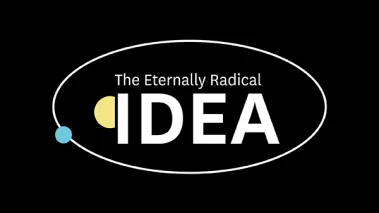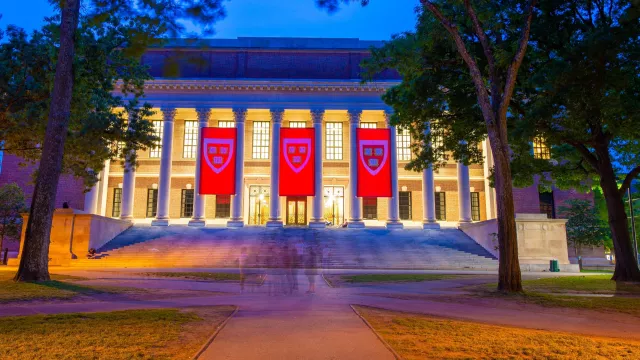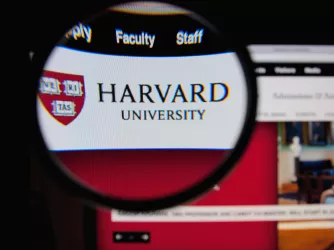Table of Contents
Speech Codes: Alive and Well at Colleges

This article originally appeared in The Chronicle of Higher Education on Aug. 1, 2003.
Five years ago, a higher-education editor for The New York Times informed one of us, Harvey Silverglate, that Neil L. Rudenstine — then president of Harvard University — had insisted that Harvard did not have, much less enforce, any “speech codes.” Silverglate suggested the editor dig deeper, because virtually any undergraduate could contest the president’s claim.
A mere three years earlier, the faculty of the Harvard Law School had adopted “Sexual Harassment Guidelines” targeted at “seriously offensive” speech. The guidelines were passed in response to a heated campus controversy involving a law-student parody of an expletivefilled Harvard Law Review article that promoted a postmodernist, gender-related view of the nature of law. In response to an outcry by outraged campus feminists and their allies, a law professor lodged a formal complaint against the parodists with the college’s administrative board.
When the board dismissed the charge on the technicality that the law school had no speech code that would specifically outlaw such a parody, the dean at the time appointed a faculty committee to draft the guidelines, which remain in force today. The intention was to prevent, or punish if necessary, future offensive gender-related speech that might create a “hostile environment” for female law students at Harvard. As far as Silverglate (who lives and works near the Harvard campus and follows events there closely) has observed, there has not been a truly biting parody on hot-button issues related to gender politics at the law school since.
Last fall, officials at Harvard Business School admonished and threatened with punishment an editor of the school’s student-run newspaper for publishing a cartoon critical of the administration. He resigned in protest over the administration’s assault on the paper’s editorial independence.
At virtually the same time, after a controversy in which a law student was accused of racially insensitive speech, a cry went up for adopting “Discriminatory Harassment Guidelines” to parallel the code that outlawed gender-based insults. As the controversy progressed, some students accused two professors of insensitivity for trying to discuss the issues in class. Soon after the Black Law Students Association demanded that one of those professors be disciplined and banned from teaching required first-year classes, he announced that he would not teach his course for the rest of the semester. The other professor insisted on continuing to teach, but the dean’s office announced that all of his classes had to be tape-recorded so that any students who felt offended being in his presence could instead listen to the recorded lecture.
All of that at a university that, as President Rudenstine supposedly assured The New York Times, did not have, much less enforce, a speech code.
Today, many in higher education still share Rudenstine’s apparent belief that a speech code exists only if it is prominently stamped SPEECH CODE in the student handbook. To them, any speech code is an anachronism, a failed relic of the 1980s that has disappeared from all but the most repressive backwaters of academe.
But speech codes are alive and well, if one is realistic about what makes a campus regulation a speech code. The Foundation for Individual Rights in Education defines a speech code as any campus regulation that punishes, forbids, heavily regulates, or restricts a substantial amount of protected speech. Thus defined, speech codes are the rule rather than the exception in higher education.
Why does virtually no college call its speech code by that name? For one thing, in the 1980s and ’90s, every legal challenge of a clearly identified speech code at a public institution was successful. To maintain a weapon against speech that is “offensive” or “uncivil” (or merely too robust), the authors of the current stealthier generation of speech codes have adopted highly restrictive “speech zone” policies, email policies that ban “offensive” speech, “diversity statements” with provisions that punish those uttering any “intolerant expression,” and, of course, the ubiquitous “harassment policies” aimed at “hostile” viewpoints and words that operate by redefining speech as a form of conduct.
Colleges must recognize that growth, progress, and innovation require the free and occasionally outrageous exchange of views. Without speech codes, students are more likely to interact honestly.
FIRE initiated, in April, a litigation project aimed at abolishing such codes at public colleges and universities, beginning with a lawsuit charging that various policies at Shippensburg University are unconstitutional. Shippensburg promises only to protect speech that does not “provoke, harass, demean, intimidate, or harm another.” Shippensburg’s “Racism and Cultural Diversity” statement (modified by the university after FIRE filed suit) defined harassment as “unsolicited, unwanted conduct which annoys, threatens, or alarms a person or group.” Shippensburg also has “speech zones” that restrict protests to only two areas on the campus.
In a recent Chronicle article, Shippensburg’s president, Anthony F. Ceddia, complained that FIRE had “cobbled together words and expressions of different policies and procedures.” That is true; it found unconstitutional provisions in many different places — the student handbook and the university’s Web site, to cite just two — and is challenging all of them.
FIRE has been developing an online database of policies that restrict speech on both private and public campuses. Given the longstanding assumption that academic freedom at liberal-arts colleges protects offensive and unpopular speech, the number and variety of such policies are startling. FIRE’s still-in-progress survey and analysis demonstrates that a clear majority of higher-education institutions have substantial speech restrictions and many others have lesser restrictions that still, arguably, infringe on academic freedom.
Some codes, of course, are worse than others. Some are patently unconstitutional; others, artfully written by offices of general counsels, seek to obfuscate their intention to prohibit or discourage certain speech. However, there is no excuse for a liberal-arts institution, public or private, to punish speech, no matter how impolite, impolitic, unpopular, or ornery.
No one denies that a college can and should ban true harassment — but a code that calls itself a “racial-harassment code” does not thereby magically inoculate itself against free-speech and academic-freedom obligations. The recent controversy over “racial harassment” at Harvard Law School has been replicated on campuses across the country, often with outcomes as perilous to academic freedom. For example, in 1999, a professor at the Columbia University School of Law administered a criminal-law exam posing a complex question concerning the issues of feticide, abortion, violence against women, and consent to violence. Some women in the class complained to two faculty members, who then told the law-school dean that the professor’s exam was so insensitive to the women in the class that it may have constituted harassment. The dean brought the case to Columbia’s general counsel before concluding — correctly of course — after a dialogue with FIRE that academic freedom absolutely protected the professor.
Such examples demonstrate the persistence of the notion that administrators may muzzle speech that some students find “offensive,” in the name of protecting civil rights. Further, the continuing existence of these codes relies on people’s unwillingness to criticize any restriction that sports the “progressive” veneer of preventing racial or sexual “harassment” — even when the codes themselves go far beyond the traditional boundaries of academic and constitutional freedom. Fortunately, some see these codes for what they are and recognize that there is nothing progressive about censorship.

Spotlight on Speech Codes
Reports
FIRE surveys speech codes at America’s top colleges and universities, providing readers with key data on individual schools and national trends.
It should be obvious that allowing colleges to promulgate broad and amorphous rules that can punish speech, regardless of the intention, will result in self-censoring and administrative abuses. Consider the case of Mercedes Lynn de Uriarte, a professor at the University of Texas at Austin. In 1999, after filing an employment grievance, she received notice that the campus’s office of equal employment opportunity had chosen to investigate her for “ethnic harassment” of another professor in her department. Both de Uriarte and the accusing professor were Mexican-American. The facts suggest that the ethnic-harassment accusation was little more than an excuse for the university to retaliate against de Uriarte for filing the grievance. After nine months of pressing de Uriarte to answer personal questions about her beliefs and why she disliked the other professor, the EEO office concluded that there was no evidence of “ethnic harassment” but scolded de Uriarte for “harboring personal animosity” toward the other professor and for not being sufficiently cooperative with the investigating dean.
In 2001 at Tufts University, a female undergraduate filed sexualharassment charges against a student publication, citing a sexualharassment code and claiming a satirical cartoon and text made her a “sex object.” A vocal member of the Student Labor Action Movement, she was offended when the paper mocked “oh-so-tight” slam tank tops (amid other jokes about Madonna and President Bush). Hearings were initiated. FIRE successfully persuaded the hearing panel to reject the attempted censorship.
Those are just two examples among dozens that FIRE has seen recently where speech codes are used against students or faculty members. They illustrate not only that these codes are enforced, but that they are enforced against speech that would be clearly protected in the larger society.
Moreover, virtually none of the cases that FIRE has dealt with have followed the paradigm that “hate-speech codes” were supposedly crafted to combat: the intentional hurling of an epithet at a member of a racial or sexual minority. Overwhelmingly, speech codes are used against much milder expression, or even against expression of a particular unpopular or officially disfavored viewpoint.
The situation of Steve Hinkle, a student at California Polytechnic State University, is another case in point. In the fall of 2002, he posted fliers for a speech by C. Mason Weaver, the author of It’s OK to Leave the Plantation. In his book, Weaver, an African-American writer, argues that government-assistance programs place many black people in a cycle of poverty and dependence similar to slavery. The flier included the place and time of the speech, the name of the book, and the author’s picture. When Hinkle tried to post a flier in one public area, several students approached him and demanded that he not post the “offensive” flier. One student actually called the campus police, whose reports note that the students complained of “a suspicious white male passing out literature of an offensive racial nature.” Hinkle was subjected to administrative hearings over the next half year and was found guilty of “disruption” for trying to post the flier.
Unless one considers posting a flier with factually accurate information a “hate crime,” it is clear such speech codes are used to punish speech that administrators or students simply dislike. That should not come as a surprise to any student of history. When broad powers and unchecked authority are granted to officials — even for what are claimed to be the noblest of goals — those powers will be abused. Indeed, the Supreme Court has ruled unequivocally that “hate-speech laws,” in contrast to “hate-crimes laws,” are unconstitutional. Yet most of the speech prosecuted on college campuses does not even rise to the level of hate speech.
Some argue that speech codes communicate to students the kind of society to which we all should aspire. That is perhaps the most pernicious of all justifications, for it makes unexamined assumptions about the power of administrators to reach intrusively into the hearts and consciences of students. There is nothing ideal about a campus where protests and leaflets are quarantined to tiny, remote “speech zones,” or where being inoffensive is a higher value than intellectual engagement.
Yet even if one agrees with such “aspirations,” it is antithetical to a liberal-arts college to coerce others into sharing them. The threat of sanctions crosses the clear line between encouraging such aspirations and coercing fealty to them, whether genuine or affected. An administrator’s employing the suasion of the bully pulpit differs crucially from using authority to bully disfavored opinions into submission.
Some people contend that the codes are infrequently enforced. The facts demonstrate otherwise, but even if a campus never enforced its speech code, the code would remain a palpable form of coercion. As long as the policy exists, the threat of enforcement remains real and will inevitably influence some people’s speech. In First Amendment law, that is known as a “chilling” effect: Merely by disseminating the codes in student handbooks, administrators can prevent much of the speech they disfavor. Students, seeing what is banned — or even guessing at what might be banned as they struggle with the breadth or vagueness of the definitions — will play it safe and avoid engaging in speech that, even though constitutionally protected, may offend a student or a disciplinary board.
In the long run, speech codes — actively enforced or not — send the message that it is OK to ban controversial or arguably ugly expressions that some do not wish to hear. Students will not forget that lesson once they get their diplomas. A whole generation of American students is learning that its members should hide their deeply held unpopular beliefs, while other students realize that they have the power, even the right, to censor opinions they dislike.
Take the case at Ithaca College last spring, when the College Republicans brought to campus Bay Buchanan, the sister of Patrick Buchanan, for a speech entitled “The Failures of Feminism.” Instead of protesting the speech or debating Buchanan’s points, several students demanded that the campus police stop the event and declare it a “biasrelated incident” — a punishable offense. The “Bias-Related Incidents Committee” ultimately declared the speech protected but then announced that it would explore developing policies that could prohibit similar future speeches. Outrageous though it seems, the students’ reaction is understandable. Ithaca College teaches that it is okay to ban “biased” speech. The “Bias-Related Incidents Committee” shunned free speech as a sacred value and instead sought ways to punish disagreeable viewpoints in the future.

Record Editorial: HLS Needs Harassment Policy Alternatives
News
One week after the Harvard Business School administration threatened its student newspaper editor with sanctions over a "deeply hurtful" comment in a cartoon, the Law School is confronted with its own free speech conundrum.
FIRE generally eschews litigation in favor of reasoning with campus administrators in detailed philosophical, academic, and moral arguments made in memorandums and letters. However, speech codes have proved remarkably impervious to reasoned arguments, for while FIRE often can snatch individual students from the jaws of speech prosecutions, administrators rarely abandon the codes themselves. (A happy exception was when in 1999 the Faculty Senate of the University of Wisconsin at Madison voted to repeal the longstanding code that restricted faculty speech.) FIRE thus initiated its litigation campaign.
Shippensburg is the beginning. In cooperation with FIRE’s Legal Network, attorney Carol Sobel in May challenged a speech code at Citrus College, in California, where students were allocated three remote areas — less than 1 percent of the campus — for protest activities. Even if they were to protest within the ironically named “free speech area,” students had to get permission in advance, alert campus security of the intended message, and provide any printed materials that they wished to distribute, in addition to a host of other restrictions. Further, this free-speech area was open only from “8 a.m. through 6 p.m, Monday through Friday.” Citrus’s student-conduct code banned “lewd, indecent, obscene or offensive conduct [and] expression,” and included a number of other highly restrictive provisions. Just two weeks after the lawsuit was filed, the administration yielded and rescinded all of the provisions listed above. It is unfortunate that it took a lawsuit to demonstrate that restrictions on words have no place on the modern liberal-arts campus.
Colleges must recognize that growth, progress, and innovation require the free and occasionally outrageous exchange of views. Without speech codes, students are more likely to interact honestly. Having one’s beliefs challenged is not a regrettable side effect of openness and intellectual diversity, but an essential part of the educational process. And, in fact, liberty is more than simply a prerequisite for progress; it is, at the deepest level, a fundamental and indispensable way of being human.
Harvey A. Silverglate is counsel to Good & Cormier, a Boston law firm. He is co-author, with Alan Charles Kors, of The Shadow University (HarperPerennial, 1999) and a director of the Foundation for Individual Rights in Education. Greg Lukianoff is a lawyer and the director of legal and public advocacy for FIRE.
- Faculty Rights
- Speech Codes
- Free Speech
- Litigation
- Student Rights
- Harassment
- Shippensburg University of Pennsylvania
- Columbia University
- Harvard University
- Citrus College
- California Polytechnic State University
- University of Texas at Austin
- Tufts University
- Columbia Law School: Threat to Punish Professor for ‘Hostile Environment’ Due to Exam Question
- California Polytechnic State University (Cal Poly): Use of Disruption Claim to Suppress Free Speech
- Citrus College: Speech Code Litigation
- Shippensburg University: Speech Code Litigation
- Harvard University: Threat to Discipline Student Newspaper Staff for Publishing Satirical Cartoon
- Harvard University: Proposed Speech Codes
- Tufts University: Use of Sexual Harassment Allegations to Suppress Protected Speech
Recent Articles
FIRE’s award-winning Newsdesk covers the free speech news you need to stay informed.

Revoking Harvard’s tax-exempt status will threaten all nonprofits

Grandpa’s advice for the new wave of American censors

FIRE POLL: Only 1/4 of Americans support deporting foreigners for pro-Palestinian views
